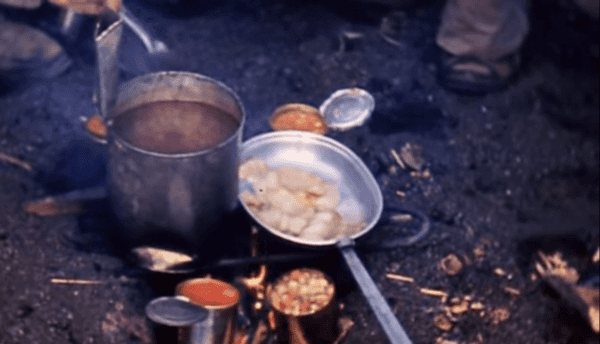This video showcases five facts that may not be widely known about military rations, and covers everything from WWII to the future.
Do you know what a C-ration is, or how SPAM relates to military rations? Where will rations come from in the future? Watch the video for the answer to these questions.

(Military.com/YouTube)
Hauling food around on the battlefield isn’t easy or practical, and resources are limited in dangerous environments. This has been a problem since the earliest wars, and one that the military has tried to solve in order to provide critical sustenance to fuel their troops.
Did you know that it wasn’t until 1944 that any effort was put into making rations taste even remotely appealing? Modern ration research began in 1936 with the founding of the Subsistence Research Laboratory in Chicago, Ill. They worked together with the American food industry to make rations that met four key criteria: nutritional adequacy, storage stability, military functionality, and sensory adaptability.
The entry into WWII meant they had to mass-produce rations that could be quickly shipped to every corner of the globe, which meant that nutrition, storage, and functionality took precedence and taste took a back seat. So many complaints came in about the food that in 1944 the government finally decided to do something to make them taste better.
By 1944, 90 percent of Hormel’s canned foods were shipped for government use. During WWII, many manufacturers saw a lucrative opportunity with food rations. By early 1945, 60 percent of all Hormel’s products were consumed by U.S. troops.

(Military.com/YouTube)
The food that troops ate during the Vietnam War was referred to as “C-rations” but were really Meal, Combat, Individual (MCI) rations — canned wet combat rations introduced in 1958 as a replacement to WWII-era rations. MCIs included new menu options designed to reduce monotony and for the troops to eat the entire ration in order to get all of the much-needed calories. However, they were hardly any better than the C-rations, which is why they were still called C-rations at the time.
Did you know that “Tabasco Mac” was awarded the Navy Cross for actions during the Battle of Guadalcanal in 1942? The former president of the Tabasco’s company was a Marine in WWII and was given the nickname, Tabasco Mac. Tiny bottles of Tabasco sauce were included among items like toilet paper, gum, and matches inside of Meal, Ready-to-Eat (MRE) rations introduced in the 1980s. In 1986, the MRE became the first non-canned standard issued field ration.
In the future, 3D printing may be used to create rations. Today, researchers are working to completely redesign rations for the troops. They call it future general-purpose operational rations. It tailors rations to specific parts of the world and producing food with 3D printers. This would include 24 different entrees and 150 additional items.



